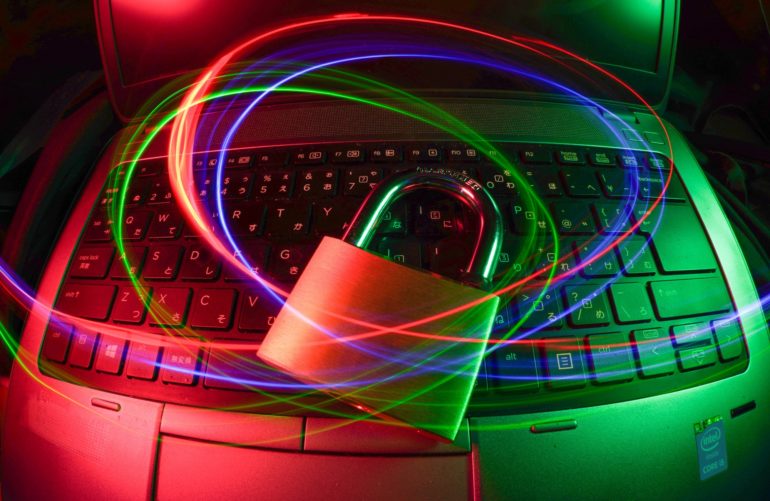In the United States, an average of 1,200 data breaches occur, and 440 million records are exposed annually. As a content creator, your assets are critical to the brand you’ve built. Losing your digital marketing assets after a hack could severely impact your ability to run your startup.
It’s important for all businesses to protect their assets to the best of their abilities. Fortunately, you don’t need a large IT team, or an IT team at all, to keep your content safe on your computer.
Data security is a necessary investment, especially as our systems become more vulnerable to cyberattacks. Even if you have few assets, you’ll want to increase security now before you grow.
How to Protect Your Content Assets Online
Whether you have a visual branding strategy on social media or you’re someone who runs a few ad campaigns a year, you can use these tips to protect your content assets online.
1. Protect Assets as Intellectual Property
All of your digital marketing assets are considered intellectual property because they’re creative works.
Words, phrases, and designs are protected under copyright unless you create these works for another person or the person who created the assets doesn’t allow you to use them.
However, if you want to sue someone for content infringement, you must file a copyright or trademark registration before going to court. You can file the registration before or after the violation occurs, but it’s better to do it before as it acts as a deterrent against thieves.
You should apply the same rigor to protecting your own assets if you run a business, which is where forming a limited liability company (LLC) takes center stage as a suitable option. As with pursuing copyright infringement cases, you need to apply local expertise to this process, since rules differ from state to state. For instance, this easy-to-follow guide to create an Illinois LLC will suit organizations in this region.
2. Use Watermarking on Photos and Videos
A watermark is a message, like a signature, logo, or stamp, that’s superimposed on an image or video with a high level of transparency.
Content creators can use a batch watermarking tool if they want to protect all of their assets, but keep in mind that watermarking is a bit of a science.
The logo, signature, or stamp you choose has to be unique. You typically have to copyright your watermark if you’re planning to file a lawsuit. Otherwise, it’s hard to prove the mark is yours.
Even if the watermark includes your full name, there’s a chance that someone else could be similarly named. Another word of advice: make sure your watermark can’t be easily cropped out. Don’t include the mark anywhere near the sides.
Try to put it somewhere near the middle.
3. Backup Your Data and Install Antivirus
It’s hard to predict when a data breach will occur, so it’s a good idea to prepare if it does happen. You should never assume that you won’t be hacked. It can happen to anyone, even small businesses or contractors.
That’s why it’s crucial to back up your data to the cloud.
However, the cloud may not be enough. Consider using an external hard drive for a second backup and storing it out of the office in case a flood, earthquake, fire, or break-in occurs.
Your last step is to install antivirus software that protects against viruses and malware. Don’t install or use free versions of paid antivirus software or free-to-use programs, as they won’t be as efficient as trusted brands.
Always update your antivirus program when a new version is out.
In addition to proactively backing up your data, understanding and implementing best practices for securing cloud environments can significantly reduce the risk of data breaches. Emphasize encrypting data not only in transit but also at rest, and avail yourself of cloud-native tools to audit system configurations regularly.
4. Follow Wi-Fi Security Best Practices
Wi-Fi is an inexpensive way to use the internet, but it can come with risks.
If you’re a remote employee who likes to work in coffee shops, know that public Wi-Fi is an unsecured connection that’s open to hackers. You’ll need a VPN or a private network to avoid a security breach.
If you’re a business owner that manages multiple employees, you need to educate your staff on Wi-Fi safety, especially if they keep workplace data on their devices or use public Wi-Fi.
At the office, keep your router in a secure location with restricted access and change your Wi-Fi name and password regularly. Keep your network security software, your employee’s devices, and firmware updated regularly.
Enable the firewall on your router and all office devices.
5. Implement 2-Factor Authentication (2FA)
A whopping 81% of data breaches are due to poor password security, so strengthening your passwords is the first step to data security. A strong password is over 13 characters long, includes many characters, and isn’t repeated or used for more than one website.
You should also avoid using easy-to-guess passwords.
Avoid using “123,” “password,” “123123,” or “password123” at all costs, as they’re common and the first combinations hackers check.
But if you really want to secure your accounts, implement 2FA where possible. 2FA offers an extra layer of protection by asking account holders to answer a question or input a code when they log on.
Most modern software and apps already come with this security feature enabled.
6. Avoid Suspicious Websites and Links
Phishing attacks account for 25% of all data breaches.
Some of these attacks are also caused by poor password security, but phishing schemes are often coercive. For example, a phishing email may pose as the police and ask for private information to prevent a fine or jail time.
It’s also really common for malicious actors to create dummy websites. Employees might stumble on these websites and type in their login credentials without realizing it’s fake.
Preventing a phishing attack is incredibly difficult as it relies on human error. At the same time, you can reduce the number of attacks that occur by securing email gateways, investing in cloud email security, and training your staff.
Due diligence is necessary to keep your content safe.
7. Manage Rights Access and Information
Employee negligence is the weakest link when it comes to content asset protection, but you’re shooting yourself in the foot if you give entry-level associates access to important files. Be sure to set permissions for your marketing assets so only the necessary people have access.
Some companies use digital asset management software, like Brand Folder, to store, share, and manage assets, but most tools already have an option to set access permissions.
For example, Google Docs lets you add or remove users from files and adjust share access.
Bottom Line on Protecting Your Content Assets Online
These seven tips, if implemented in your everyday work life, can help you protect your personal and professional data from potential threats.
By being proactive with your security, you will be able to keep your eye on the ball while running your startup and not have to constantly worry about losing valuable information that your business depends on.







